Explore Cairo's Gem: Saint Sergius & Bacchus Church

History of Saints Sergius and Bacchus Church in Egypt
History of the construction of Saints Sergius and Bacchus Church
In the past, the Saints Sergius and Bacchus Church in Egypt was a remarkable structure that stood as a testament to the rich history and culture of the region. The church was constructed in the 4th century during the reign of the Roman Emperor Constantine the Great. It was built to honour the martyrs Sergius and Bacchus, who were Roman soldiers who had converted to Christianity and were subsequently executed for their faith. The church's architecture blended Roman and Byzantine styles, showcasing intricate mosaics and beautiful frescoes adorning its walls.
As you walk through the ancient halls of the church, you can't help but feel a sense of awe and reverence for the generations of worshippers who have passed through its doors. The church served as a place of worship and pilgrimage for Christians in Egypt for centuries, attracting believers from far and wide to pay their respects to the martyrs and seek blessings for themselves and their loved ones.
Significance of the church in Egyptian history
The Saints Sergius and Bacchus Church held immense significance in Egyptian history, not just as a place of religious worship but also as a symbol of resilience and faith in the face of adversity. Throughout its existence, the church withstood numerous political and social upheaval periods, emerging as a beacon of hope and stability for the community. It served as a gathering place for Christians to unite, celebrate their faith, and find solace in times of turmoil.
As you stand in the presence of this ancient sanctuary, you can't help but feel a deep connection to the past and an appreciation for the enduring spirit of those who built and preserved it for future generations.
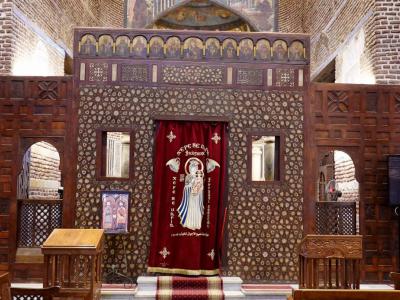
Architecture of Saints Sergius and Bacchus Church
Architectural features of the church
As you enter the awe-inspiring Saints Sergius and Bacchus Church in Egypt, you are immediately struck by its remarkable architectural features. The church, constructed in the 4th century, boasts a unique blend of Roman and Byzantine styles that create a sense of grandeur and spirituality.
The intricate mosaics and beautiful frescoes that adorn the walls tell stories of faith and sacrifice, showcasing the craftsmanship and dedication of the artisans who built this sacred space.
Influence of Coptic and Byzantine architecture
Walking through the ancient halls of the church, you can't help but notice the influence of both Coptic and Byzantine architecture in its design. The Coptic influence can be seen in the use of geometric patterns and symbolic motifs that reflect Egyptian Christian traditions.
On the other hand, the Byzantine influence is evident in the use of ornate decorations and domed ceilings that exude a sense of magnificence and spirituality. This unique fusion of architectural styles creates a harmonious blend that speaks to the church's rich history and its role as a symbol of unity and faith.
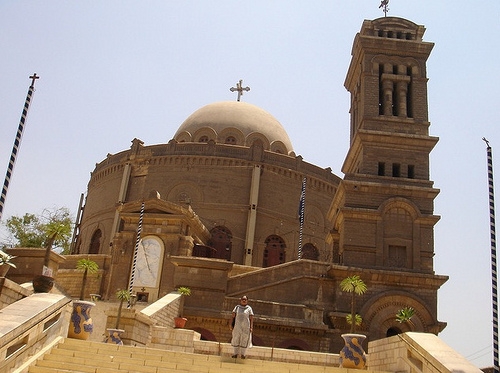
Religious Significance of Saints Sergius and Bacchus Church
Religious practices and ceremonies held at the church
As you step into the magnificent Saints Sergius and Bacchus Church in Egypt, you will experience a sense of peace and spirituality that transcends time. The church is a place of worship and prayer, where religious practices and ceremonies have been held for centuries.
From solemn masses to joyful celebrations, this sacred space provides a sanctuary for believers to come together and connect with their faith. The hallowed halls resonate with the echoes of prayers and hymns, creating a serene atmosphere that invites contemplation and reflection.
Patron saints and their significance
Walking through the historic corridors of the church, you will encounter depictions of the patron saints, Sergius and Bacchus, who are revered for their steadfast devotion and martyrdom. These saints hold a special significance in the hearts of worshippers, serving as inspirational figures of faith and resilience.
Their stories of courage and sacrifice are commemorated in the church's art and iconography, reminding visitors of the enduring legacy of these revered saints. As you gaze upon their images, you can't help but feel a sense of reverence and admiration for the strength of their beliefs.
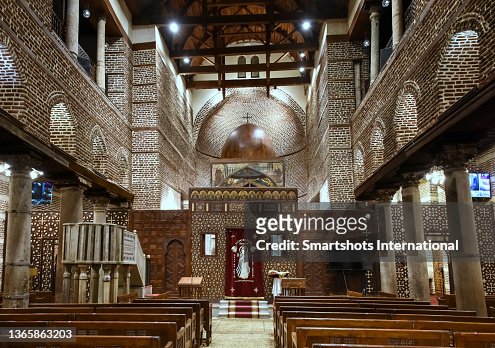
Restoration and Preservation Efforts
Efforts to preserve the historical significance of the church
As you engage in the restoration and preservation efforts of the magnificent Saints Sergius and Bacchus Church in Egypt, you become a guardian of its historical significance. Your dedication to maintaining this sacred space ensures that future generations can continue to experience the sense of peace and spirituality it offers.
By actively participating in preservation activities, such as conservation projects and historical documentation, you play a vital role in safeguarding the church's legacy for years to come.
Challenges faced in restoring the church's original structure
As you delve into the restoration process of Saints Sergius and Bacchus Church, you are met with various challenges in preserving its original structure. From architectural complexities to weathering effects, each obstacle presents a unique hurdle that requires careful navigation. Your commitment to overcoming these challenges, whether through innovative restoration techniques or collaboration with preservation experts, is essential in ensuring that the church's historical integrity remains intact.
Despite the obstacles, your unwavering dedication to restoring this sacred space reflects a deep admiration for its cultural and religious significance.
Art and Decor of Saints Sergius and Bacchus Church
Religious artwork and iconography within the church
As you immerse yourself in the intricate art and decor of the Saints Sergius and Bacchus Church, you are surrounded by a rich display of religious artwork and iconic symbols. Each brushstroke and carving tells a story of faith and devotion, inviting you to explore the deep spiritual significance woven into every detail.
The vivid depictions of saints and biblical scenes serve as visual reminders of the church's sacred history, inspiring a sense of reverence and awe within you.
Symbolism behind the decorations and designs
Delving into the artistry adorning Saints Sergius and Bacchus Church, you uncover a tapestry of symbolism and meaning carefully interwoven into the decorations and designs. From intricate mosaics depicting heavenly beings to ornate carvings symbolizing eternal truths, each element serves as a spiritual contemplation and reflection conduit.
The vibrant colours and intricate patterns beautify the sacred space and convey profound messages of faith, unity, and divine grace that transcend language barriers and cultural divides.
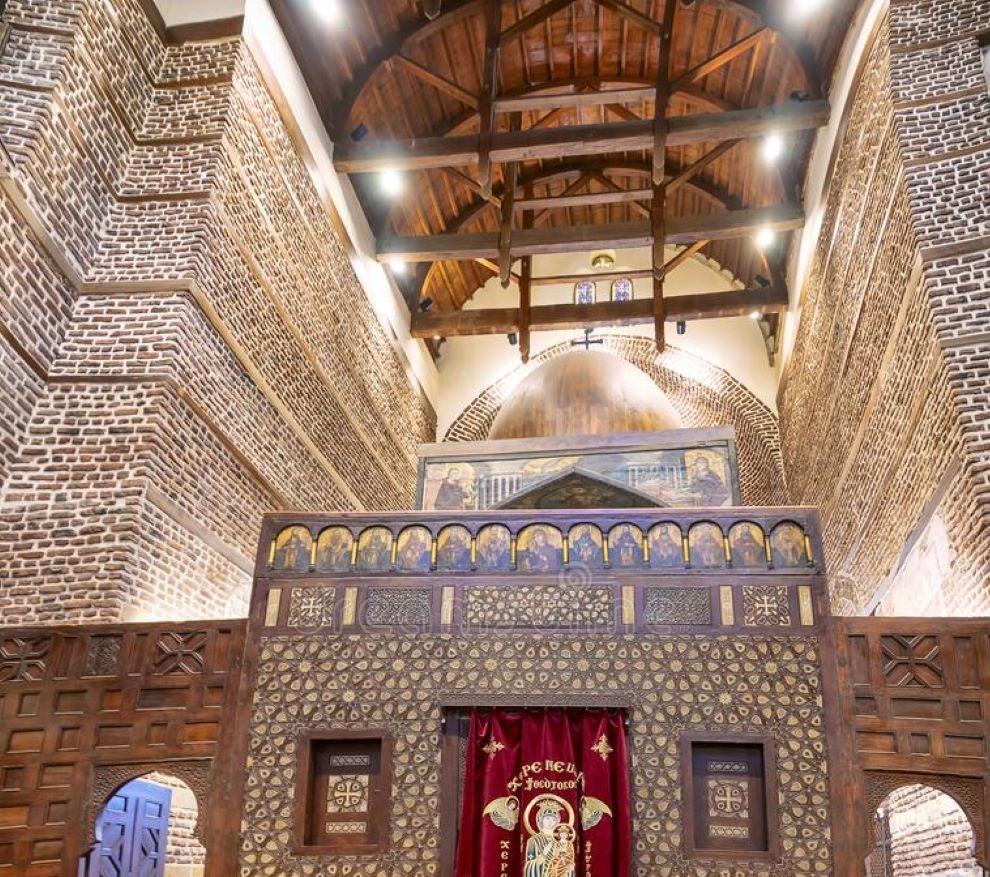
Saints Sergius and Bacchus Church Today
Current role of the church in Egypt
As you step into Saints Sergius and Bacchus Church today, you are greeted by a serene atmosphere that still carries the echoes of centuries-old devotion. The church continues to stand as a beacon of faith in Egypt, offering solace and spiritual nourishment to both locals and visitors alike. Its significance extends beyond religious boundaries, fostering a sense of unity and peace within the diverse community it serves.
Community events and services hosted at the church
Exploring the vibrant tapestry of community events and services at Saints Sergius and Bacchus Church, you are met with a kaleidoscope of activities that cater to the soul and spirit. From traditional ceremonies to modern gatherings, the church serves as a hub for cultural exchange and spiritual enrichment.
Whether attending a religious service, a musical performance, or a charitable event, you are invited to partake in the shared joy and camaraderie that define the church's role as a gathering place for all.

Pilgrimages and Tourism
Popular destination for pilgrimages
For those seeking spiritual journeys, Saints Sergius and Bacchus Church is a popular pilgrimage destination. The church's rich history and sacred atmosphere draw pilgrims from near and far, seeking meaning and connection through their visit. Pilgrims often find peace and inspiration within the church's walls, adding to its reputation as a place of spiritual significance.
Tourism Impact on the church and surrounding Area
As tourism continues to grow in Egypt, the impact on Saints Sergius and Bacchus Church and its surrounding area becomes more pronounced. Increased visitors bring both opportunities and challenges as the church balances the preservation of its sacred space with the demands of tourism. Efforts to protect the church's heritage while accommodating tourists reflect the delicate balance between accessibility and conservation.
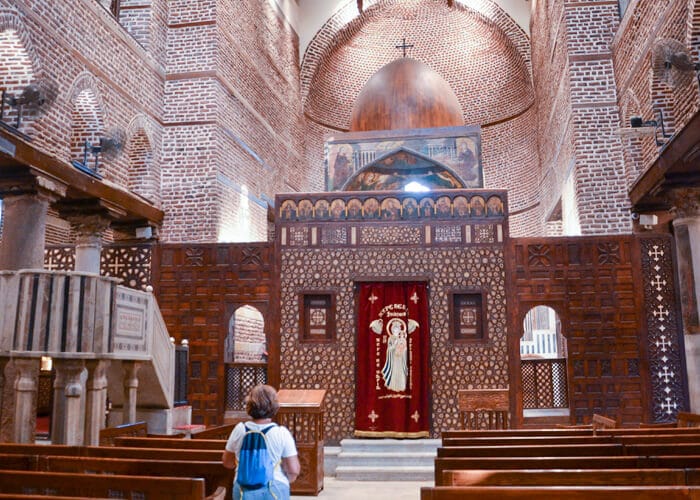
Saints Sergius and Bacchus Church in Popular Culture
Depictions of the church in literature and media
When you delve into the portrayals of Saints Sergius and Bacchus Church in literature and media, you uncover a treasure trove of references that highlight its enduring significance.
From ancient texts to modern films, the church's presence resonates through various artistic mediums, showcasing its timeless appeal and cultural importance. Whether depicted as a symbol of faith or a backdrop for dramatic narratives, the church captivates audiences with its rich history and spiritual aura.
Cultural references to Saints Sergius and Bacchus
As you explore the cultural landscape, you encounter numerous references to Saints Sergius and Bacchus that underscore their revered status. From religious ceremonies to artistic interpretations, the saints hold a special place in the hearts of many believers and creatives alike.
Whether celebrated through music, art, or folklore, the legacy of Saints Sergius and Bacchus reverberates across generations, cementing their place in cultural heritage and collective memory.
